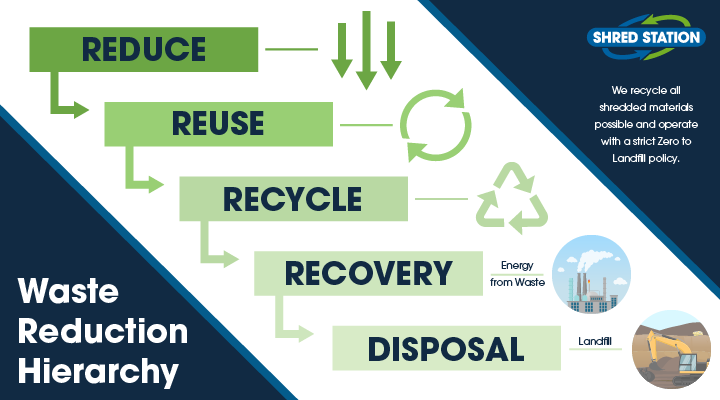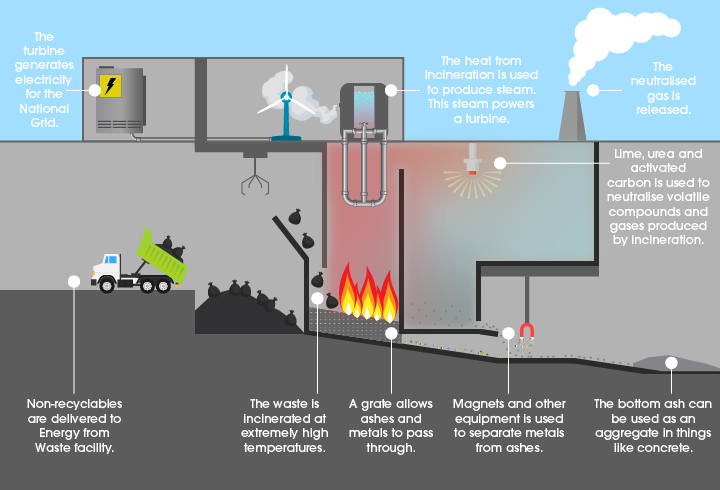How does Energy from Waste work?
At Shred Station, we operate with a strict Zero to Landfill policy.
Supporting our Zero to Landfill policy is an unwavering commitment to ensure we recycle everything we possibly can. For example, we recycle 100% of the paper we shred at UK mills. We also utilise our network of verified suppliers to recycle all possible non-paper materials. Just a few examples include recycling shredded metals at metal refineries, sending recyclable shredded textiles to rag recycling, and melting down shredded plastics to be reused in new plastic products. For non-recyclables, we utilise Energy from Waste as a landfill alternative. But, why?
Why do we use Energy from Waste instead of landfill?
When it comes to making the most out of ‘waste’ materials, the most environmentally friendly method is to follow the waste reduction hierarchy, as depicted below.

Energy from Waste is considered recovery as the process generates electricity for the National Grid. With landfill, this wouldn’t be possible. We also choose Energy from Waste over landfill because it doesn’t produce methane – a greenhouse gas that has 28x the warming impact of carbon dioxide over 100 years. So, how exactly does Energy from Waste achieve this recovery?
How does Energy from Waste work?
Energy from Waste facilities are all a little different. In general, though, the facilities incinerate materials at extremely high temperatures, usually in excess of 850°C. The heat from this process is used to boil large stores of water and generate steam. The steam powers a turbine, creating energy. This energy is captured and distributed to the National Grid.
The diagram below shows how this works. Please note that the full Energy from Waste process is much more complex than the diagram below. This simplified diagram is for visualisation purposes and should not be used to demonstrate the entire Energy from Waste process.

When should Energy from Waste be used?
The UK Government’s Department for Environment, Food, and Rural Affairs (DEFRA) published a guide – Energy from Waste: A Guide to the Debate – which says:
“The potential for energy from waste to consume materials which could otherwise be managed higher up in the waste hierarchy is a legitimate concern.”
“This is not a fundamental issue arising from energy from waste as a process, but rather as a result of opportunities not being taken to separate and remove materials from residual waste. Provided the right action is taken to ensure separation and pre-treatment options are optimised, it is a risk that can be effectively addressed. Energy from waste can and should support, not compete, with effective recycling.”
At Shred Station, we only use Energy from Waste when recycling isn’t an option. We work towards Sustainable Development Goal 12: Responsible Consumption and Production to ensure we shred and recycle sustainably. As a CarbonNeutral® certified company, we also ensure that any emissions our processes do produce are offset in line with the Carbon Neutral Protocol.
For more information about how we can make your shredding services more sustainable, get in touch with our team.
Sign up for our newsletter to receive alerts about new blog articles, data protection advice, and Shred Station news.
